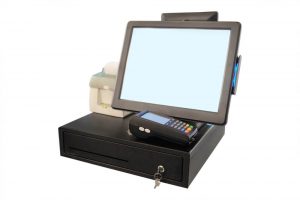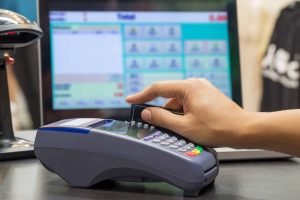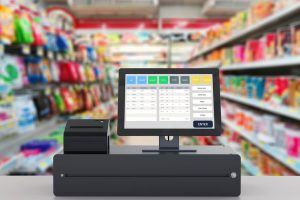The importance of POS systems in FinTech cannot be overstated. Why? Because businesses can now adopt cash alternatives on a large scale.
The current cloud features have further simplified POS systems for consumers and merchants. Whether it’s at the eatery, gym, boutique, restaurant, or your nearby store, the ease of buying and selling goods and services is at an all-time high.
The advancements made on this front don’t lack their shortcomings, which we’ll be taking a closer look at. The systems are still subject to fraud, payment disputes, and theft.
That’s not all; debit without alerts because of network problems between the acquiring server and terminal and reclaiming guarantees on services acquired or products bought are other issues of importance.
These issues offer enough reasons to have a way of tracing the POS owners’ name, location, goods purchased, and time of transaction.
You know that, yes, a POS transaction is traceable. So how do you go about tracing it?
Read more about this below!
How To Trace a POS Transaction
Step 1: Report to your Bank or Call your Bank Customer Care
If it’s fraud-related matters, it would be best to contact your bank instead of seeking help from third-party entities because it’s safer and protects your information. Some people will take this opportunity to dupe you, mislead you, or erase proof.
Step 2: Explain to the Bank the Whole Scenario
It would help if you were entirely honest about the situation and how it came. If it was being charged multiple times for one product, an overcharge, if you were charged for items, you never purchased, or a suspicion of fraudulent transactions, tell it to the letter.
Step 3: Provide Proof of the Transaction in Context
Most debit/credit cards send feedback for every charge that is made, either through text or mail. This text or mail holds crucial information about how, where, and when the transaction occurred.
Step 4: Track Through Debit Card Details
The details, as stated above, come in this particular format;
Amount (XXXX) deducted at “Company Name,” and the balance is (XXXXX) or something close. The details usually include the account number at the top. And the reference number at the end.
In other instances, the format may come like this;
Acct no: 1XXXXXXXXXX1
Transaction date and time
POS identification number and location
DR Amt: XXXXX (Amount debited)
Bal: XXXXX
REF: XXXXX (Transaction reference number)
You can use it to prove that the transaction occurred without your knowledge; however, you should know that the person who made this transaction knew your PIN, so whoever it is might be closer to you than you think.
You could use these details to trace where and who did the transaction if the merchant kept records correctly.
In case of a refund or an overcharge, you will receive your money back as long as you keep the receipt and provide a good reason.
Step 5: Bank Contacts the Merchant
The payment gateway for POS systems works from bank to bank. It ensures that information such as time, date, email address, phone numbers, transfer location, and transaction number is captured. Moreover, every POS is linked to a registered company, requiring account transfer and server validation.
The bank can then reverse the transaction according to the holder’s request if it is valid.
Most POS systems are presumed to have attained global industry data encryption standards for merchants before operations.
Additionally, the hardware must meet the minimum EMV requirements for efficiency and easy tracing and curbing of fraud.
As a merchant, you need to realize that any fraudulent activities arising from negligence or collaboration with fraudsters will be held against you.
This makes it vital for both the software and hardware to regularly check for irregularities or lapses such as inaccurate documentation and reporting, connectivity issues, and security.
Can POS Steal My Money?
POS is a device used to pay for goods or services you receive, but some people have taken the opportunity to steal your details and, in turn, obtain your money fraudulently.
We know of two methods fraudsters and POS agents use to conduct their fraudulent activities.
1. Snapping your ATM Card
Some stores are situated so that you can’t clearly see what the agent is doing with your card, and there they snap your card using a smartphone. If you cannot see proceedings and the POS agent is taking abnormally long to hand you the device to enter your PIN, do yourself a favor and hastily ask for your card and leave.
2. Deliberately Making you Forget your Card
An agent can make you leave your store without your card. How? After withdrawal, the agent should hand you your card before the money, but fraudulent agents give out the money first. Please ensure you leave your card in the wrong hands.
What Is a POS Transaction on a Bank Statement?
Do you have a checking account at a credit union or a bank? If so, you get a statement every month indicating your account’s beginning and ending balances. You also receive all transactions made within the month.
A POS transaction on a bank statement is a payment you make at a point of sale location; an example is a supermarket cash register or a checkout terminal.
How Do I Record a POS Transaction?
There are various ways you can use to record a POS transaction. They include mobile/tablet, online, terminal, and self-service kiosks.
Mobile/tablet is the most commonly used POS system because of its outstanding flexibility. The terminal has hardware and software; it describes touchscreen/computer combos.
Self serve kiosks are suitable for small businesses; they are all-in-one devices. It is widely available with restaurant POS systems. However, some retail systems are likewise capable.





